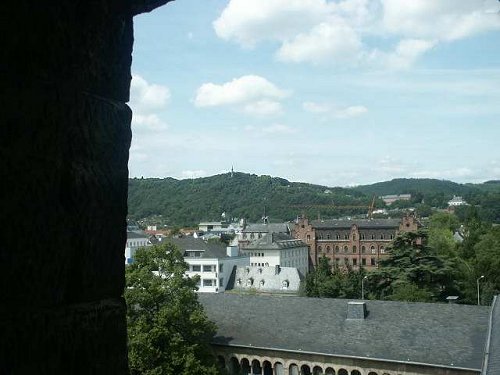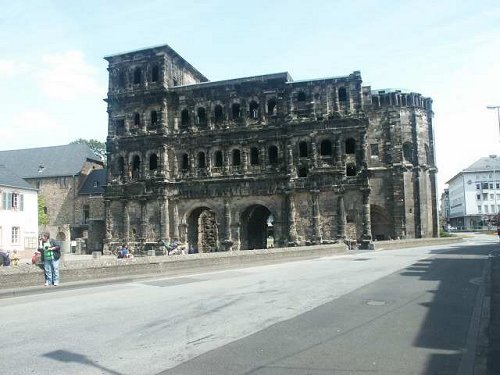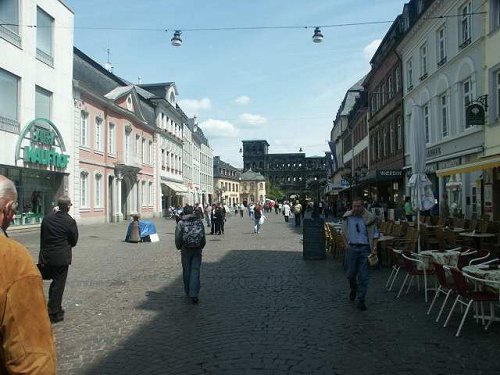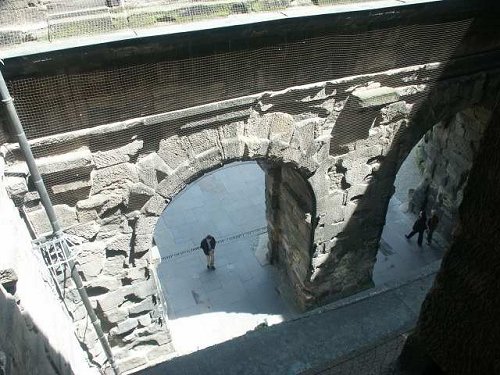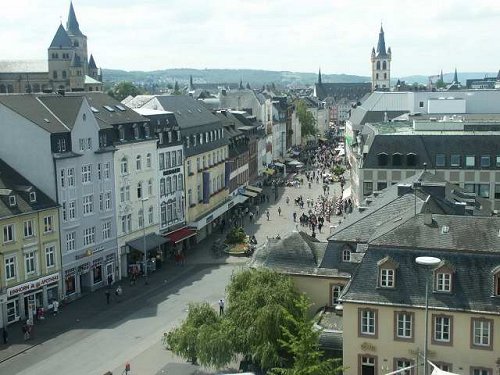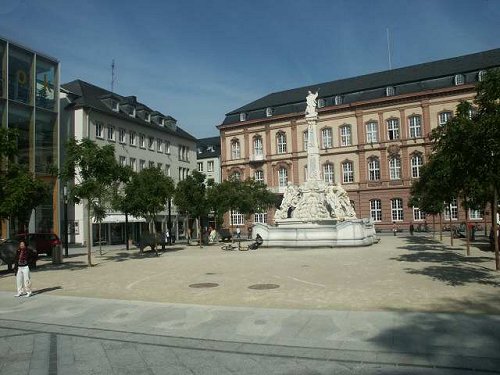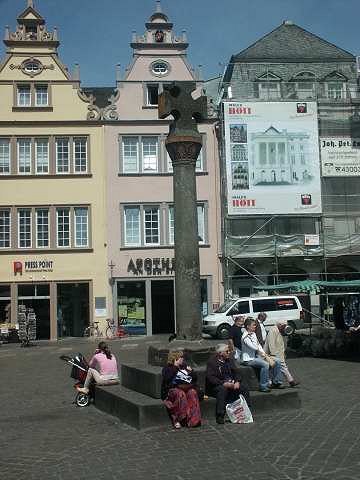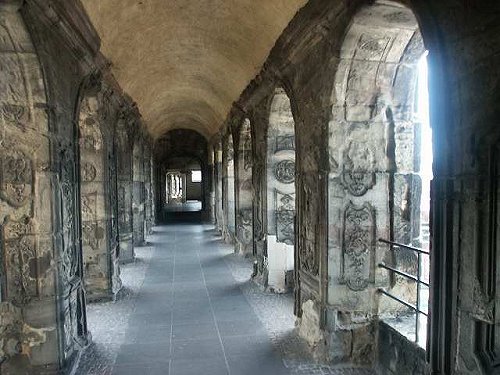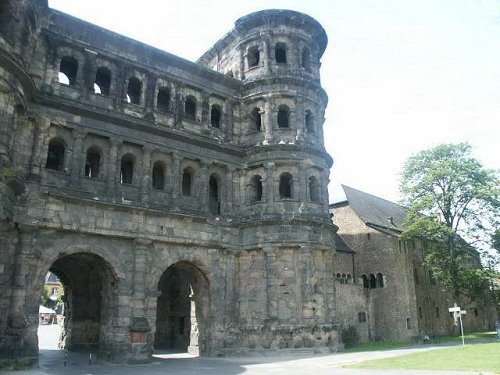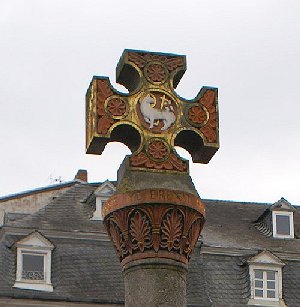"[Caesar] left such troops as he thought sufficient for this business; and himself, with four legions marching light and eight hundred horse, set out for the borders of the Treveri, because this tribe came not to the councils nor obeyed his command, and, according to report, was stirring up the Germans beyond the Rhine."

 Julius Caesar The Gallic War, V, 2
Julius Caesar The Gallic War, V, 2
Trier has delightful streets to walk and explore (above, the SimeonStrasse market, and the Marktkreuz of the Marktplatz, said to date back to 958 AD), and the core of the city is completely accessible by foot from central parking (though the parking can be expensive). The Marktkreuz has some interesting detail, showing the Lamb who was slain for the sins of the world (the Lamb and Cross motif). The inset photo was taken in 2007, after it had received some cleaning maintenance.
One way to explore a city is to park in the outskirts and take a train or bus into the interior. However, I believe that the interior of Trier is primarily serviced by bus only. With a combination of ancient and medieval structures, it is well worth a visit. Below is a view of Trier from the Porta Negra looking west towards the St. Marien Column
One of the awesome sites of Trier is the Porta Negra, or Black Gate. This imposing structure, slightly modified in the middle ages, is still accessible. For a few Euros you can take a modern spiral staircase up into the structure and look out over the town. The walls themselves show evidence of being built without mortar in the base, the stones being so finely crafted that they fit together without cement. However, they were initially held together by large iron clips which over the years have rusted away and vanished. The interior has exquisite decorative workmanship the like not seen in this day and age.
